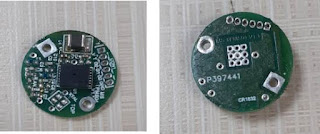Features of Tyre Pressure Monitoring System | Millennium Semiconductors
Human safety being of utmost importance on the roads, the Government keeps updating policies and standards for manufacturing of automobiles. One such for India is a new AIS 154 standard regarding technical requirements for Tyre Pressure Monitoring Systems (TPMS).
To start with, A tire-pressure monitoring system (TPMS) is basically an electronic system which is designed to monitor the air pressure inside the pneumatic tires. The purpose of the tire pressure monitoring system (TPMS) in your vehicle is to warn you that at least one or more tires are significantly under-inflated, possibly creating unsafe driving conditions. The TPMS low tire pressure indicator is a yellow symbol that illuminates on the dashboard instrument panel in the shape of a tire cross-section (that resembles a horseshoe) with an exclamation point.
The goal of a TPMS is avoiding traffic accidents, poor fuel economy, and increased tire wear due to under-inflated tires through early recognition of a hazardous state of the tires.
TPMS are provided both at an OEM (factory) level as well as an aftermarket solution. TPMS Using Bluetooth: The driver could get the real-time tire pressure and temperature through smart phone by using this kit while driving. When the system detects the abnormal status, it will alarm the driver actively, and show the abnormal data and its tire location on BLE TPMS APP (hereinafter referred to as APP).
Features:
- Ultra-low power operation from 3.6 down to 1.8 V: 90 nA sleep current (LFO and timer running, memory retention)
- Tiny 4 x 5 mm wettable flanks DFN-14 package
- Integrated multi-axis accelerometer (X, Z or XZ): up to 700 g measurement range
- Power efficient 315/433 MHz RF transmission: up to 150 kbps data rate
- Integrated multi-function sensing: pressure, acceleration, temperature, and voltage
- Different pressure ranges up to 1,400 kPa: down to ± 4 kPa accuracy and 0.2 kPa resolution




Comments
Post a Comment